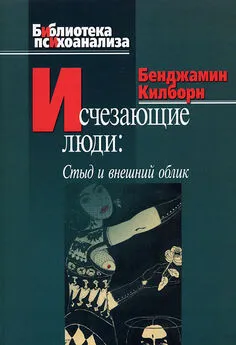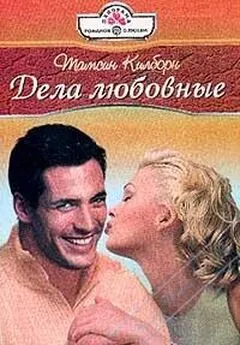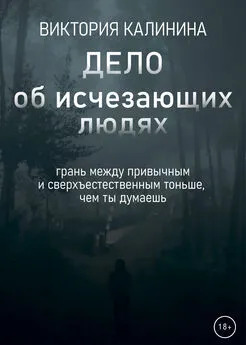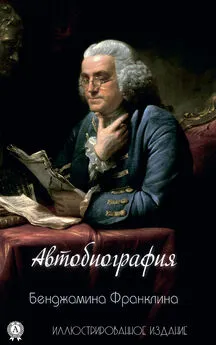Бенджамин Килборн - Исчезающие люди. Стыд и внешний облик
- Название:Исчезающие люди. Стыд и внешний облик
- Автор:
- Жанр:
- Издательство:Литагент «Когито-Центр»881f530e-013a-102c-99a2-0288a49f2f10
- Год:2007
- Город:Москва
- ISBN:978-5-89353-231-9
- Рейтинг:
- Избранное:Добавить в избранное
-
Отзывы:
-
Ваша оценка:
Бенджамин Килборн - Исчезающие люди. Стыд и внешний облик краткое содержание
Автор книги, имея подготовку по литературе, истории, антропологии и клиническому психоанализу, рассматривает вопрос о том, как человек, контролируя свой внешний облик, пытается совладать со своими чувствами. Считая, что психология внешнего облика еще не достаточно исследована, Килборн объединяет в своей книге примеры из литературы и своей клинической практики, чтобы сделать следующее утверждение: стыд и внешний облик являются главной причиной страха, возникающего и у литературных персонажей, и у реальных людей. Автор описывает, что стыд по поводу своего внешнего облика порождает не только желание исчезнуть, но и страх исчезновения.
«Исчезающие люди» являются неким гибридом прикладной литературы и прикладного психоанализа, они помогают нам понять истоки психокультурного кризиса, потрясающего наше ориентированное на внешность, побуждающее к стыду общество.
Книга будет интересна не только психоаналитикам и студентам, изучающим психоанализ, но и широкому кругу читателей.
Исчезающие люди. Стыд и внешний облик - читать онлайн бесплатно ознакомительный отрывок
Интервал:
Закладка:
Hegel, G. W. F. [1807 (1977)]. Phenomenology of the Spirit (trans. A. V. Miller). Oxford: Oxford University Press.
Hoffer, Axel (1985). Towards a definition of analytic neutrality. Journal of the American Psychoanalysis Association 33:771–795.
Hoffer, Axel (1997). Asymmetry and mutuality in the analytic religion-ship: contemporary lessons from the Freud-Ferenczi dialogue [In] Rudnytsky et al. (eds.). Ferenczi's Turn in Psychoanalysis.
Hollander, Ann [1975 (1977)]. Seeing Through Clothes. New York: Viking. Josephs, Lawrence (1997). The view from the tip of the Iceberg. Journal of the American Psychoanalysis Association 45(2): 425–464.
Kafka, Franz [1925 (1984)]. The Trial. New York: Knopf.
Kafka, Franz (1971). The Hunger Artist [In] Natham Glazer (ed.). Franz Kafka The Complete Stories. New York: Schoken.
Kant, Immanuel [1790 (1978)]. The Critique of Judgement (trans. James Meredith). Oxford: Oxford University Press.
Kant, Immanuel [1781 (1896)]. Critique of Pure Reason (trans. Max Muller). London: Macmillan.
Kant, Immanuel (1977). Prolegomena to Any Future Metaphysics (trans.
Paul Carus) Indianapolis: Hackett Publishing Co.
Kepes, Gyorgy, ed. (1966). Module, Proportion, Symmetry, Rhythm. 4 vols. New York: Braziller.
Kernberg, Otto (1975). Borderline Conditions and Pathological Narcissism. New York: Jason Aronson.
Kierkegaard, Soren Either/Or [1843 (1959)] (trans. Walter Lowrie). 2 vols. Garden City, N.Y.: Doubleday.
Kierkegaard, Soren [1849 (1989)] The Sickness Unto Death (trans. Alistair Hannay). London: Penguin.
Kierkegaard, Soren [1855 (1944)]. The Concept of Dread (trans. Walter Lowrie). Princeton, N. J.: Princeton University Press.
Kierkegaard, Soren (1980). The Concept of Anxiety (ed. and trans.
R. Thomte). Princeton, N.J.: Princeton University Press.
Kilborne, Benjamin (1978). Interpretation du reve au Maroc. Claix: La Pensee Sauvage.
Kilborne, Benjamin (1981a). Pattern, structure and style in anthropological studies of dreams. Ethos 9(2):165–185.
Kilborne, Benjamin (1981b). Aspects of the handing of symbols in Moroccan dream interpretation. Psychoanalytic Study of Society 9:1-14. Kilborne, Benjamin (1981c). Dream interpretation and culturally constituted defense mechanisms. Ethos 9(4):294–312.
Kilborne, Benjamin (1982). Anthropological thought in France in the wake of the revolution: La Societe des Observateurs de l'Homme. European Archives of Sociology 23: 73–91.
Kilborne, Benjamin (1987a). In memorial: George Devereux. Psychoanalytic Study of Society 11:1-14.
Kilborne, Benjamin (1987b). On classifying dreams [In] Barbara Tedlock (ed.). Dreaming: anthropological and psychological interpretations. Cambridge: Cambridge University Press.
Kilborne, Benjamin (1992a). Fields of shame; anthropologists abroad. Ethos 20(2):230–253.
Kilborne, Benjamin (1992b). Positivism and its vicissitudes: the role of faith in the social sciences. Journal of the History of the Behavioral Sciences 28(3):352–370.
Kilbome, Benjamin (1995a). Truths which cannot go naked; a review essay. Psychiatry 58:278–297.
Kilborne, Benjamin (1995b). Of creatures large and small: psychic size, size anxiety, and the analytic situation. Psychoanalytic Quarterly 64:672–690.
Kilborne, Benjamin (1997). The hunting of the red-faced snark [In] Melvin Lansky and Andrew Morrison (eds.). The Widening Scope of Shame. Hillsdale, NJ.: Analytic Press.
Kilborne, Benjamin (1998a). Ferenczi, regression and shame. International Forum of Psychoanalysis 7:225–228.
Kilborne, Benjamin (1998b). The disappearing who [In] Joseph Adamson and Hilary Clark (eds.). Scenes of Shame: psychoanalysis, shame and writing. Albany: State University of New York Press.
Kilborne, Benjamin (1999a). When trauma strikes the soul. American Journal of Psychoanalysis 59(4):385–403.
Kilborne, Benjamin (1999b). Wrestling with Proteus. Psychoanalytic Inquiry 19(3):362–372.
Kilborne, Benjamin (2001). Shame deeper, deepest: shame [In] The Scarlet Letter (unpublished paper).
Kilborne, Benjamin and Degarrod, Lydia N. (1983). As in a Dream: some paintings of Giorgio de Chirico. Dreamworks 3(4):281–293.
King, David (1997). The Commisar Vanishes; the falsification of photographs and art in Stalin’s Russia. New York: Henry Holt.
Kirmmsew, Bruce H. (1990). Kierkegaard in Golden Age Denmark. Bloomington: Indiana University Press.
Kirschner, Lewis (1993). Concepts of reality and psychic reality in psychoanalysis as illustrated by the disagreement between Freud and Ferenczi. International Journal of Psychoanalysis 75:219–230.
Kohut, Heinz (1971). The Analysis of the Self. New York: International Universities Press.
Kohut, Heinz (1977). The Restoration of the Self. New York; International Universities Press.
Kohut, Heinz (1984). How Does Analysis Cure? Arnold Goldberg (ed.). Chicago: University of Chicago Press.
Krausz, Rosmarie (1994). The invisible woman. International Journal of Psychoanalysis 79:59–72.
Kris, Anton O. (1982). Free Association: method and process. New Haven, London: Yale University Press.
Kundera, Milan (1995). The New York Review of Books (Sept. 21).
Lacan, Jacques (1966). Ecrits (trans. A. Sheridan). New York: Norton.
Lanes, Selma G. (1980). The Art of Maurice Sendak. New York: Abagale Press (Henry Abrams).
Lansky, Melvin (1992). Fathers Who Fail. Hillsdale, N.J.: Analytic Press.
Lansky, Melvin (1996). Shame and suicide in Sophocles’ Ajax. Psychoanalytic Quarterly 65:761–786.
Lansky, Melvin (1997). (with Andrew Morrison, ed.). The Widening Scope of Shame. Hillsdale, N.J.: Analytic Press.
Lansky, Melvin and Morrison, Andrew (1997). The legacy of Freud’s writings on shame [In] Melvin Lansky and Andrew Morrison (eds.). The Widening Scope of Shame.
Laplanche, Jean, and Pontalis, J. B. (1981). Vocabulaire de la Psychoanalyse. Paris: Presses Universitaires de France.
Lasch, Christopher (1978). The Culture of Narcissism. New York: Norton.
Laver, James [1969 (1982)]. Costume and Fashion: a concise history. London: Thames and Hudson.
LeCoque, Andre (1987). Encyclopedia of Religion (ed. Mircea Eliade). New York: Macmillan.
Leonardo Da Vinci (1938). The Notebooks of Leonardo DaVinci (ed. Edward MacCurdy). London: Macmillan.
Leonardo Da Vinci (1945). The Drawings of Leonardo da Vinci (ed. A. E. Popham). New York: Harcourt.
Lewis, C. S. The Chronicles of Narnia.
Lewis, Helen Block (1971). Shame and Guilt in Neurosis. New York: International Universities Press.
Lewis, Michael (1992). Shame: the exposed self. Glencoe, Scotland: Free Press.
Levy, Steven T. and Inderbitzin, Larence B. (1997). Safety, danger and analytic authority. Journal of the American Psychoanalytic Association 45(2):377–394.
Lynd, Helen (1958). On Shame and the Search for Identity. New York: Harcourt.
Mahoney, Patrick (1989). Aspects of nonperverse scopophilia within an analysis. Journal of the American Psychoanalytic Association 37(2):365–400.
Martin-Cabre, Luis J. (1997). Freud-Ferenczi: controversy terminable and interminable. International Journal of Psychoanalysis 30:69–74.
Marvell, Andrew [1681 (1972)]. Complete Poems. Penguin.
Matthaei, Renate (1973). Luigi Pirandello (trans. Somon and Erika Young). New York: Ungar.
Mauss, Marcel (1967). The Gift: forms and functions of exchange in archaic societies (trans. Ian Cunnison). New York: Norton.
Melinkoff, Ruth (1993). Outcasts: signs of otherness in Northern European art of the Late Middle Ages. 2 vols. Berkeley: University of California Press.
Melville, Herman (1988). Moby Dick, or the Whale. Evanston III.: Northwestern University Press.
Merleau-Ponty, Maurice (1964). Le visible et I’invisible. Paris: Tel.
Miller, William (1993). Humiliation. Ithaca: Cornell University Press.
Milton, John (1640–1665). Paradise Lost.
Milton, John (1640–1670). Samson Agonistes.
Milton, John (1941). The Complete Poetical Works (ed. Harris Francis Fletcher). Cambridge, Mass.: Riverside Press.
Morrison, Andrew (1989). Shame the Underside of Narcissism. Hillsdale, NJ.: Analytic Press.
Morrison, Andrew (1996). The Culture of Shame. Hillsdale, N.Y.: Ballantine Books.
Nagel, Julie J. (1998). Injury and pain in performing musicians: a psychodynamic diagnosis. Bulletin of the Menninger Clinic 62(1):83–95.
Nagel, Julie J. (1999). The Paradox of Performance Anxiety in Musicians: the delusion of omnipotence (unpublished paper).
Nagel, Thomas (1998). The shredding of public privacy; reflections on recent events in Washington. Times Literary Supplement, August 14, 1998.
Nathanson, Donald, ed. (1987). The Many Faces of Shame. New York: Guilford Press.
Novick, K. K. and Novick, J. (1991). Some comments on masochism and the delusion of omnipotence from a developmental perspective. Journal of the American Psychoanalytic Association 39:307–331.
Novick, K. K. and Novick, J. (1992). Shame and Pride: affect, sex and the birth of the self. New York: Norton.
Pagels, Elaine (1988). Adam, Eve and the Serpent. New York: Random.
Peristiany, J. B. (1965). Honour and Shame: the values of Mediterranean society. London: Weidenfeld and Nicolson.
Piers, G. and Singer, M. [1953 (1971)]. Shame and Guilt. New York: Norton.
Pirandello, Luigi (1926). The Notebooks of Serafino Gubbio, Cinematograph Operator, or Shoot (trans. C. K. Scott-Moncrieff). New York: Dutton.
Pirandello, Luigi (1928). The Old and the Young, 2 vols. (trans. C. K. Scott-Moncrieff). New York: Dutton.
Pirandello, Luigi (1931). As You Desire Me (Come tu mi vuoi). A play in three acts (trans. Samuel Putnam). New York: Dutton.
Pirandello, Luigi (1933). One, None and a Hundred Thousand (trans. Samuel Putnam). New York: Dutton.
Pirandello, Luigi (1952). Naked Masks; five plays by Luigi Pirandello (ed. Eric Bentley). New York: Dutton.
Pirandello, Luigi (1964). The Late Mattia Pascal (trans. William Weaver). London: Andre Deutsch.
Pirandello, Luigi (1988). Pirandello Collected Plays, vol. 2. New York: Riverrun Press.
Pirandello, Luigi (1994). Eleven Short Stories (undici novelle) (trans. Stanley Appelbaum). New York: Dover Publications.
Pirandello, Luigi. A passing touch (story).
Plato, The Collected Dialogues (1961). (eds. Edith Hamilton and Huntinton Cairns). Princeton (Bollingen): Princeton University Press.
Poland, Warren S. (1992). Transference: an original creation. Psychoanalytic Quarterly 59(2):185–205.
Quindlin, Anna (1994). The price of privacy. The New York Times, September 28, 1994.
Rappaport, David (1957). A theoretical analysis of the superego concept [In] Collected Papers of David Rapaport (ed. Merton Gill). New York: Basic.
Rangell, Leo (1954). The psychology of poise, with a special elaboration on the psychic significance of the snout or periorial region. International Journal of Psychoanalysis 35:313–333.
Читать дальшеИнтервал:
Закладка:









